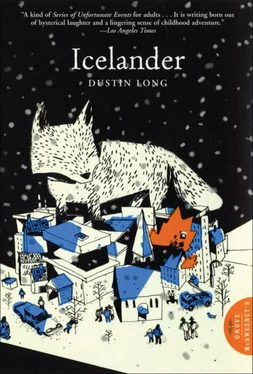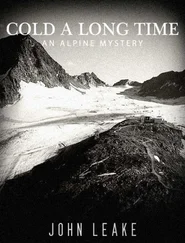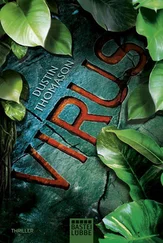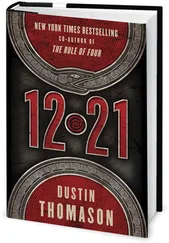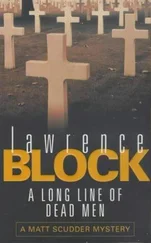Our Heroine’s mouth still back-tasted of alcohol, so she sucked a mint leaf. But the first flavor lingered. Sour, and the diffuse smell of chimney smoke in the air all around only reminded her of how cold it was. Nathan coughed emphatically into his hand as he tried to keep pace with her.
“So where are you off to?” he asked. “My agent mentioned that there was a murder in town yesterday. Are you investigating? I mean, was that car trying to hit you intentionally, to stop you from finding the murderer or something?”
She slid the leaf beneath her tongue, thought, and then swallowed it. “You have a vivid imagination. But no. I’m just looking for my dog.”
“The Fenris Dachshund, right? I love the Fenris Dachshund.”
“This is his great-grandson, Garm. I love him, too.”
“But there really was a Fenris Dachshund. That’s wonderful. I’ve never known what to believe and what not to believe about your mother’s memoirs. [17] Such loose usage of the term “memoirs” has been a common point of confusion among many readers of Valison’s novels. Some have even labored under the misapprehension that Emily Bean was an entirely fictitious character and that the diaries upon which Valison based his most famous series were merely created by him as a dramatic device. This is a perfectly understandable assumption, as many of the Master’s earlier novels employed such techniques as fictitious editors and imaginary source material. The fact remains, however, that Emily Bean was indeed a real woman, that she recorded all of her adventures in a multivolume field diary, and that Magnus Valison used that diary as the basis for a series of twelve novels that he published in the years following her death and which he titled The Memoirs of Emily Bean . Now, as to the simpler question of how closely his novels adhere to their source material, one can only speculate. The Master undoubtedly added a great degree of dramatic tension and linguistic artistry that would have otherwise been lacking, yet he also always insisted that everything in the Memoirs was true. Of course, he also claimed that Art was its own Truth, so this previous statement may not be as straightforward as it seems. Yet in basic outline, at the least, the Memoirs are based in fact.
Everything in them seems so fantastic, I’m never sure how much is Magnus Valison’s embellishment and how much is just fantastic shit that actually happened to you guys.”
“I’d really rather not talk about the Memoirs .”
“Oh yeah, you and Valison don’t get along, do you?”
“On the contrary, we get along quite well. He’s kind of like an uncle to me. We did have a minor disagreement about whether or not he should make novels out of my mother’s diaries, but [18] A pointless argument, it seems to me, since as the Master pointed out in an early essay on the Kalevala, “Art is justified by its own morality.”
—In any case, I haven’t read the Memoirs , myself, so I’m afraid I can’t help you.”
“Okay, but you know what was real, even if you don’t know what was written. The two of us collectively could probably piece together everything… I mean, for instance, the arch-villain of the Memoirs is this guy called Surt. So how does that compare with reality? Was there a Surt? A real, individual person, like an actual master of disguise, criminal genius, etc., etc.?”
“Yes.”
“You’re not just messing with me, are you? Because I kind of had this theory going that he was supposed to be a symbol for the evil that men do. Like all the different disguises that he takes show how evil can take many forms, but that, despite all the different personas, the same face of primal, archetypal evil always lurks just beneath the surface.”
“Nope. He was real.”
“Wow.”
Steam rose from a grate down to the tunnels and smelled of rotten eggs.
“But my father pretty much thinks of him as the living embodiment of all evil, even though he’s dead. If that’s any comfort.”
“You know, I met your dad once, but I didn’t even realize it was him until too late.”
“Yeah? When was that? He doesn’t get out much these days. He’s not as old as Valison, but…”
“Well, it was about three years ago, I guess. When I was visiting Vanaheim. I met Gerd, too, while I was there. She was a lot nicer than Valison made her out to be in the Memoirs . So I guess it wasn’t all true. She was giving this speech about Vanaheim’s attempt to gain independence from Iceland and stuff. We talked a little afterwards because she thought maybe my status as a big-name actor could help the cause. You know, like I could do a benefit or something to raise awareness.” [19] Magnus Valison’s exact feelings on the issue of Vanaheim’s sovereignty are difficult to discern. Though Gerd was a featured antagonist in a full fourth of the twelve volumes of the Memoirs (implying at least some sympathy on Valison’s part with her Icelandic detractors), Valison’s views as expressed in his nonfiction works are unabashedly pro-Vanaheim, often evincing the opinion that topside Iceland—having endured the colonial yoke of Denmark for an even longer term than his own native Ghana—could not be forgiven for assuming the oppressor’s role itself. In some instances, he even seems to advocate violent overthrow. As he writes in A Sodomite Cookbook , “We await the day that Vanaheim, like an unruly footnote, will rise to overwhelm the would-be master text of topside Iceland.”
Our Heroine quickened her pace.
Our Heroine’s adversarial relationship with Gerd began almost immediately upon their first meeting in 1976, during the case in which the Bean-Ymirsons discovered Vanaheim. [20] See Volume 3 of the Memoirs .
The family was living in a small Icelandic village near Snaefells and had become intrigued by the profusion of local legends concerning beings that the villagers referred to as “the hidden folk.” Ymirson initially took this all to be nothing more than indication of a rich folkloric tradition, but when Our Heroine had gone off exploring on her own one day and fallen through a hidden opening in the ground, the Bean-Ymirsons were soon made aware that some of the legends were only too true.
Our Heroine knocked herself unconscious in the fall, but fortunately Prescott had been wandering Vanaheim’s outer regions at the time—sulking over the constraints of the life that was laid out for him after his impending ascension to the throne—and he heard her come crashing down. He’d never seen a topsider before, so he smuggled her into his living quarters without a word to anyone else lest they take her away from him.
The Bean-Ymirsons searched for her frantically over the next few days as Prescott nursed her back to health; they’d almost given up hope by the time the locals began to suggest that perhaps she’s been kidnapped by the hidden folk. Despite their natural skepticism, Jon and Emily were by that point willing to try just about anything. Through continual bellowing, then, Ymirson was finally able to convince the locals to take him to Vanaheim.
From there, things got really complicated, with the rumblings of a not-so-dormant volcano, an ill-fated love affair between a local girl and a wayward Vanatru youth, and Ymirson’s chief assistant Jonsi hatching an elaborate plot to murder the family and lay claim to the discovery of Vanaheim for himself. To this end, he managed to enlist the cooperation of Prescott’s uncle Bragi, who had long planned on ruling Vanaheim from behind the scenes after Prescott’s ascension, anyway.
Gerd got involved in the plot, as well, once she found out that Prescott was keeping Our Heroine in his quarters. Personal motives aside, she firmly believed in upholding Vanatru tradition; she thus considered all topsiders to be the enemy, and so felt she had no choice but to go along with Bragi and Jonsi’s plan.
Читать дальше
